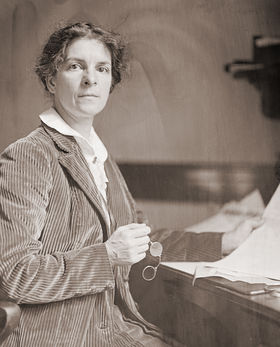
In a recent trip to the Finger Lakes region of New York, my wife and I stopped in Seneca Falls and visited the Women’s Rights National Historical Park. It was here in Seneca Falls in 1848 that Elizabeth Cady Stanton and a number of Quaker abolitionists women convened the first Women’s Rights Convention. At the convention, the women wrote what they called a “Declaration of Sentiments,” a document that stated “all men and women are created equal” and demanded that women be afforded equal rights in a manner similar to men. Three hundred women and some supportive men attended the convention in the Wesleyan Methodist Church. The document would begin the long struggle in the United States to enshrine women’s rights in law and practice.
Up to this time in America women had few individual or group rights. An unmarried woman did not have the right to vote, speak in public, hold office, or earn a living except as a teacher, seamstress, domestic or mill worker. A married woman lived under similar restrictions but could not make contracts, sue in court, divorce her husband, gain custody of her children, or own property. Although married women had nominal control of the household, they were beholden to the decisions of their husbands. There was little opportunity to attend a college to pursue a professional degree outside the home and no ability to challenge the male-dominated culture through the legal system or at the ballot box.
The Seneca Falls Convention was viewed by many as a radical undertaking and that the participants, according to the local newspaper, should be viewed with “contempt.” But Cady Stanton and her supporters continued their journey for justice and expanded the fight for basic rights. In 1850, over 1,000 Boston women led by abolitionist Lucy Stone organized a convention in Worcester, Massachusetts to keep up the momentum and to spread the message. In 1851, Cady Stanton was introduced to Susan B. Anthony in Seneca Falls and together they formed a powerful team of rights activists. In 1860, Stanton and Anthony successfully amended New York’s Married Women’s Property Act, which allowed wives to own property, keep earnings from the property and inheritance, sue in court and share custody of children.
While the “Declaration of Sentiments” and the expansion of women’s rights in New York and other New England states showed that progress was being made to create a more equitable nation. After the passage of the Emancipation Proclamation of Abraham Lincoln that ended slavery, the women’s rights movement turned its attention to issues such as anti-alcohol legislation, labor organization, public health programs, liberalized birth control initiatives and ultimately women’s suffrage. Women became labor organizers, opened settlement houses for the homeless, and founded temperance societies. Frances Willard became the President of the Women’s Christian Temperance Union in 1879, which became the largest women’s organization at the time and in 1889 Jane Addams and Ellen Starr founded Hull House in Chicago, the first settlement house for women of limited financial means. By the late 19th century more and more women were becoming involved in efforts to reform the ills of society and to expand protections for vulnerable women in the workplace and at home.
But by the turn of the century, it was becoming clear to women leaders that if true reform and equitable treatment were to become a reality, the goal of gaining the vote or suffrage for women was the key. In their later years, Elizabeth Cady Stanton and Susan B. Anthony took up the leadership of the suffrage movement. Cady Stanton became the President of the National American Suffrage Association in 1890 and was succeeded by Susan B. Anthony in 1892. Although both women died in the early 1900s, the push for women’s suffrage had gained support not only from activist women but also from political leaders in some states such as Wyoming, Idaho and Colorado. In 1918, Jeanette Rankin, the first woman to serve in the U.S.Congress from Montana introduced an amendment to give women the right to vote and by 1920 the 19th Amendment was ratified and appropriately called the Susan B. Anthony Amendment.

As my wife and I walked through the Women’s Rights National Park and viewed the displays marking the key developments in the struggle for gender equality in the United States, we were struck by the determination of women leaders to end discrimination and injustice and open economic and educational opportunities. One of the more moving photos and accompanying quote was from Rheta Dorr of New York in 1910 who said, “Women’s place is home. But home is not contained within four walls of any individual house. Home is the community. The city full of people is the family. The public school is the real nursery. And badly do the home and family need their mother.”
Of course, the struggle for justice and equity is far from over whether it be reproductive rights, equal pay, job discrimination, parental leave, childcare support and access to health care. Women’s rights are now at the forefront of the domestic policy agenda. Much remains to be done, but women are no longer viewed as second class citizens with few or any rights. In the historical evolution of women’s rights in this country it is important to remember the words of Abigail Adams, wife of John Adams, who wrote to her husband in 1776,” If particular care and attention is not paid to the ladies, we are determined to foment a rebellion, and will not hold ourselves bound by any laws in which we have no voice or representation.”